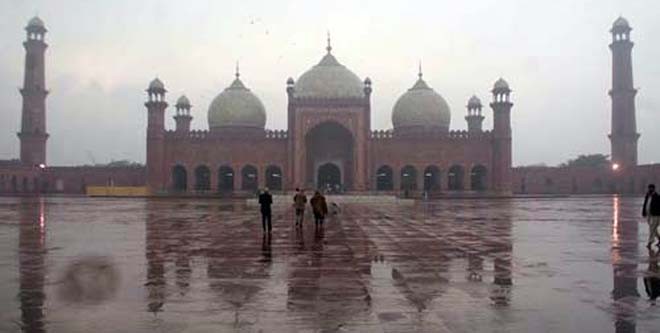
Subtlety is not generally Lahore’s defining characteristic but something mysterious happens with the drop in mercury

There’s a chill in the air and the flame on the gas stove is progressively getting thinner…guess what? Winter’s on its way!
Some, particularly in Lahore, are putting a spin on a particularly catchy slogan of a political party circulating on popular media and saying, ‘Sardi aaey gee nahi, aa gaee hai’.
Lahore is as beautiful in the winters as it is during the spring -- exchanging the lush greenery of its boulevards for a more muted elegance.
Subtlety is not generally Lahore’s defining characteristic but something mysterious happens with the drop in mercury. The city’s demeanour appears more regal and in sync with its rich cultural heritage. Undoubtedly, polluted air is probably the major component of that wintry haze enveloping the city, but it still cannot detract from the old-world charm evoked by all that diffused sunlight filtering through the trees.
Due to the absence of the harsh sun beating down on one’s back, exploring the city becomes much more appealing during the winter months. The palpable mellowness in the city’s persona beckons the tourist not just to the famed Mughal and Colonial architecture but also invites the more curious to experience the spirit of modern Lahore. Walking is the medium of choice for intrepid travellers around the world. To facilitate tourists, the lanes around some of the Mughal monuments have been recently designated as walkways. Pre-Partition buildings commissioned by Sikhs showcase an interesting amalgamation of British and Indian stylistic sensibilities while old cafes and bookstores tucked between more commercial enterprises off the Mall road offer a fascinating insight into the Lahore of the 1960s and the 70s.
Nostalgic is perhaps the correct word to describe the air Lahore assumes during the coldest months of the year. Photographs tinted sepia by time reveal a safer and more open society where female bicyclists and scooter riders were once a common sight instead of being a rarity.
Rarity is too euphemistic a term here since there are no female bicyclists on the roads now. Even male bicyclists shall soon find it difficult to navigate the traffic-choked roads of Lahore. (According to a recent research on traffic patterns in Lahore, there are only three roads in the city with specially designated bicycle lanes. This is an unfortunate state of affairs for a city with an ever expanding population and increasing transportation costs.)
The Metro bus service is a purported solution to the problem but it too is restricted in its feasibility. Running on specific routes, the Metro is not the most conducive option for those interested in exploring different parts of Lahore. Here, the ubiquitous Qingchi comes to the rescue. A pared-down version of the traditionally decked-up rickshaws, the Qingchi looks as funny as its name sounds and is just one of the many Southeast Asian ideas flourishing in Pakistan. For the price of a few hundred rupees, it will transport you to parts of Lahore where a car could never go.
For those keen to experience the true essence of Old Lahore, guided tonga ride tours around the city are also available.
Lahore during the winters is like a Robert Frost poem, with mellowness contrasted with a strange sharpness. Just as a Frost poem requires careful reading and rereading, this city of contrasts only reveals its charms to the avid observer.